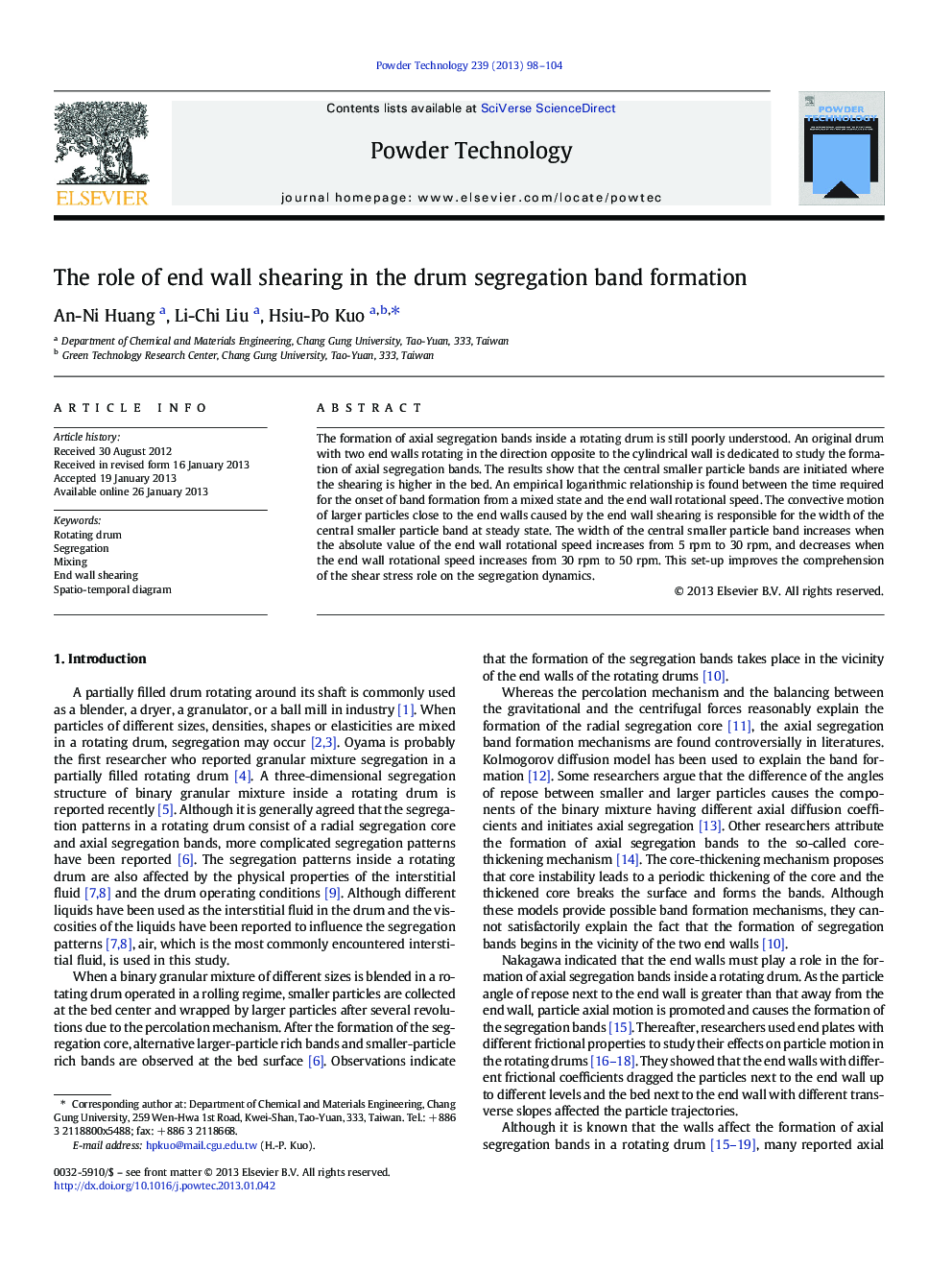| Article ID | Journal | Published Year | Pages | File Type |
|---|---|---|---|---|
| 236758 | Powder Technology | 2013 | 7 Pages |
The formation of axial segregation bands inside a rotating drum is still poorly understood. An original drum with two end walls rotating in the direction opposite to the cylindrical wall is dedicated to study the formation of axial segregation bands. The results show that the central smaller particle bands are initiated where the shearing is higher in the bed. An empirical logarithmic relationship is found between the time required for the onset of band formation from a mixed state and the end wall rotational speed. The convective motion of larger particles close to the end walls caused by the end wall shearing is responsible for the width of the central smaller particle band at steady state. The width of the central smaller particle band increases when the absolute value of the end wall rotational speed increases from 5 rpm to 30 rpm, and decreases when the end wall rotational speed increases from 30 rpm to 50 rpm. This set-up improves the comprehension of the shear stress role on the segregation dynamics.
Graphical abstractA special rotating drum with two end walls rotating in the direction opposite to the cylindrical wall is used to study the formation of segregation bands. The segregation band initiates at where shearing is higher. An empirical logarithmic relationship is found between the time required for the onset of band formation and the end wall rotational speed.Figure optionsDownload full-size imageDownload as PowerPoint slideHighlights► The role of end wall shearing in drum segregation band formation is evaluated. ► Band formation time and the end wall shearing follows a logarithmic relationship. ► Particle convective motion is responsible for the band width at steady state.
